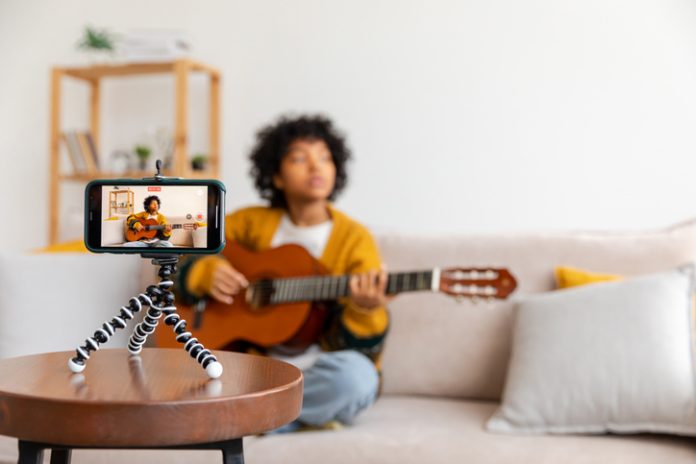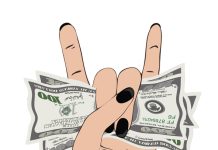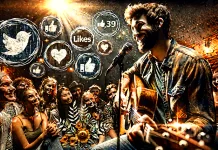
With the rapid growth of social media platforms like TikTok, Instagram, and YouTube as key marketing tools, independent artists are gaining unprecedented visibility. However, with this visibility comes a crucial challenge—understanding and managing music licensing in these digital spaces. In 2024, as music licensing laws continue to evolve, independent artists must navigate copyright regulations, protect their content, and ensure they can monetize their music without infringing on others’ work.
This guide will break down how to handle music licensing on social media platforms in 2024, offering insights into copyright protection, ways to monetize content, and practical steps to avoid legal pitfalls.
Understanding Music Licensing on Social Media
Music licensing ensures that creators are paid for the use of their work. It allows musicians to control how their music is used, who uses it, and in what context. Without proper licensing, using music on social media platforms can lead to copyright infringement, take-downs, and loss of revenue opportunities.
Social media platforms have their own systems for managing music usage, but independent artists must be proactive in protecting their music and navigating these systems effectively.
Key Licensing Terms for Independent Artists
Before diving into the platforms themselves, here are a few key terms every independent artist should understand:
- Synchronization (Sync) License: This license allows music to be synchronized with visual media, such as a TikTok or Instagram video.
- Mechanical License: This license grants permission to reproduce music, whether for streaming or physical copies.
- Master License: The master license gives the holder rights to the master recording, allowing it to be used in media.
- Public Performance License: This license allows music to be played publicly, including on digital platforms.
- Royalty-Free Music: Music that can be used without paying royalties, though there is often an initial licensing fee.
Protecting Your Music on Social Media Platforms
For independent artists, protecting your music online is essential to maintaining control over how it’s used and ensuring proper compensation. Here are a few ways to protect your music:
1. Copyright Your Music
The first step in protecting your music is to ensure it’s copyrighted. Copyright gives you the legal right to control how your music is used and distributed. Without it, others may use your work without permission, and it becomes difficult to enforce your rights.
Tip: You can register your music with the U.S. Copyright Office or equivalent organizations in your country. It’s also wise to register with a performance rights organization (PRO), such as ASCAP, BMI, or SESAC, to ensure you receive royalties.
2. Use Content ID on YouTube
YouTube’s Content ID system automatically identifies copyrighted material in videos. If your music is registered with YouTube’s Content ID, you can track where your songs are used across the platform. This system allows you to either monetize third-party content that uses your music or take it down.
Tip: You can work with a distributor or aggregator, like DistroKid or TuneCore, to help get your music into YouTube’s Content ID system.
3. Set Up Licenses for Others to Use Your Music
If you want to allow others to use your music legally on social media, setting up licensing agreements through platforms like Songtradr or BeatStars can streamline the process. These platforms help you license your music for sync opportunities, YouTube videos, or social media use, allowing you to maintain control while earning revenue.
Navigating Copyright Laws on Social Media Platforms
Each social media platform has unique rules for music usage, and understanding these will help you avoid copyright infringement while promoting your content.
1. TikTok
TikTok allows users to add music from its library to their videos, but these tracks are often licensed for personal use only. For artists, having their music in TikTok’s library through a distributor means users can legally incorporate it into their videos.
Tip: Distribute your music to TikTok through services like CD Baby or TuneCore. This allows TikTok users to access and use your music, increasing your exposure while ensuring you get compensated.
2. Instagram
Instagram’s Reels and Stories also offer a library of licensed music for users. However, using unlicensed tracks in videos could lead to them being muted or removed. As an independent artist, distributing your music to Instagram allows others to use it legally in their content.
Tip: Use Instagram’s licensing system to ensure your music is available for users to include in their content while protecting it from unauthorized use.
3. YouTube
YouTube’s approach to music licensing is more advanced, offering the Content ID system mentioned earlier. This system helps artists monitor their music’s use, monetize it, or block unauthorized use.
Tip: Register your music with YouTube’s Content ID system, allowing you to choose how it’s used and monetize it accordingly.
Monetizing Your Music on Social Media
While protecting your music is important, social media platforms also offer new revenue opportunities for independent artists. Here are a few ways to monetize your music:
1. Revenue from User-Generated Content
If you’ve registered your music with YouTube’s Content ID or TikTok’s music library, you can earn revenue when users include your music in their videos. These platforms typically pay artists based on the number of views their music generates.
2. Live Streaming and Virtual Concerts
Many social media platforms, such as Instagram, TikTok, and Twitch, now offer live-streaming features that allow artists to perform for their audiences in real-time. Artists can earn money through fan donations, tips, or platform-specific monetization options like YouTube’s Super Chat or TikTok’s Live Gifts.
3. Music Sales and Streaming
By distributing your music to platforms like Spotify, Apple Music, and YouTube Music, you can promote it through social media while earning royalties from streams. Incorporating calls to action in your social media content, such as linking to your streaming profiles, can help drive streams and increase your revenue.
Avoiding Copyright Infringement
One of the biggest challenges independent artists face is avoiding copyright infringement when using others’ music in their content. If you’re creating content that includes someone else’s music, it’s essential to ensure you have the right licenses in place to avoid takedowns, strikes, or legal action.
1. Always Use Licensed Music
If you’re using music that you don’t own, make sure it’s licensed. This is particularly important on platforms like YouTube, where using copyrighted music without permission can result in your content being demonetized or removed.
Tip: Use royalty-free music libraries like Epidemic Sound, Artlist, or Soundstripe, or seek licensing agreements through platforms like Songtradr to avoid potential legal issues.
2. Obtain Sync Licenses for Video Content
Whenever you include music in a video (such as for TikTok or Instagram), you’re required to obtain a sync license. Many social platforms handle this on your behalf, but if you’re using unlicensed music, you’ll need to secure the proper rights.
Conclusion: Staying Ahead in 2024
Music Industry Weekly understands that managing music licensing on social media can be challenging for independent artists, but staying informed about the latest trends and tools is crucial for success in 2024. By protecting your music, navigating copyright laws, and leveraging new monetization opportunities, you can promote your work effectively while avoiding legal pitfalls. Social media is a powerful tool for discovery and engagement, so understanding these complexities is key to an independent artist.







